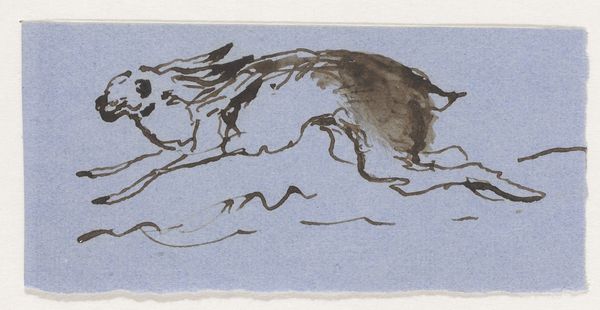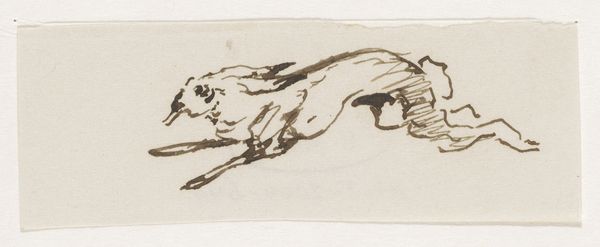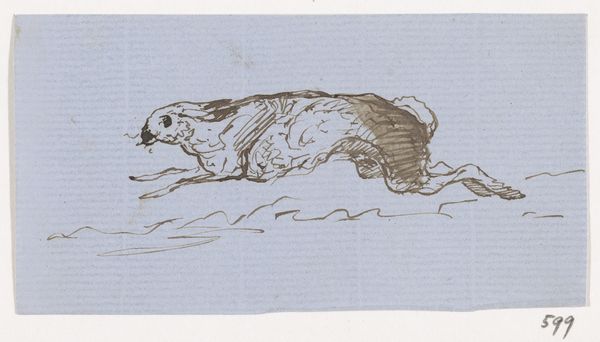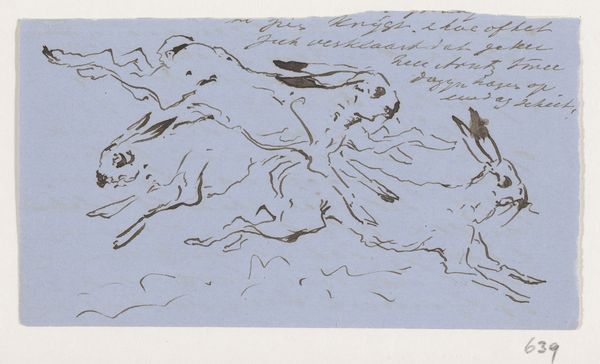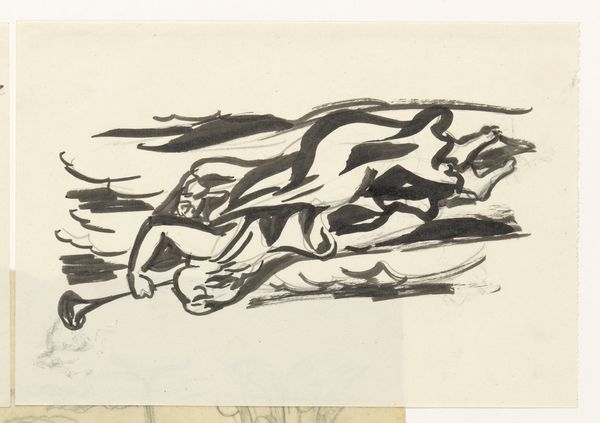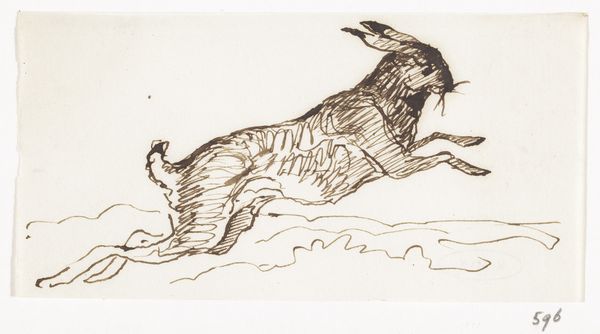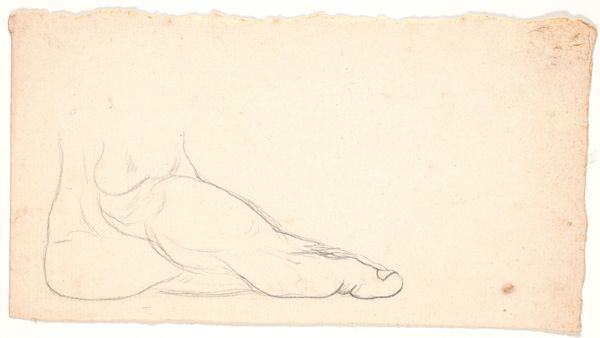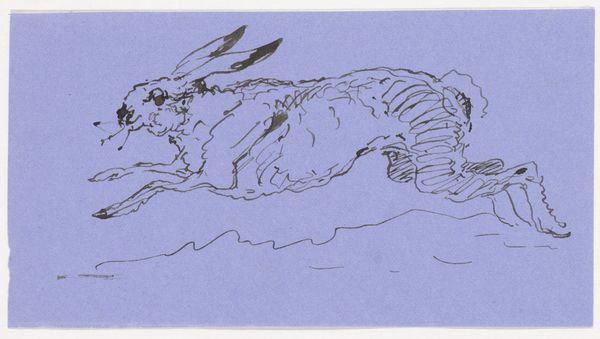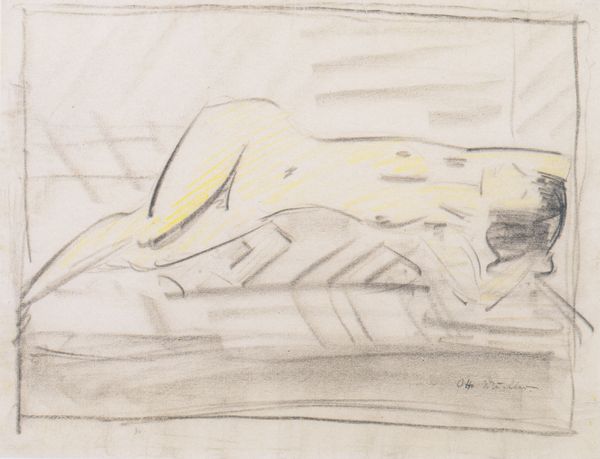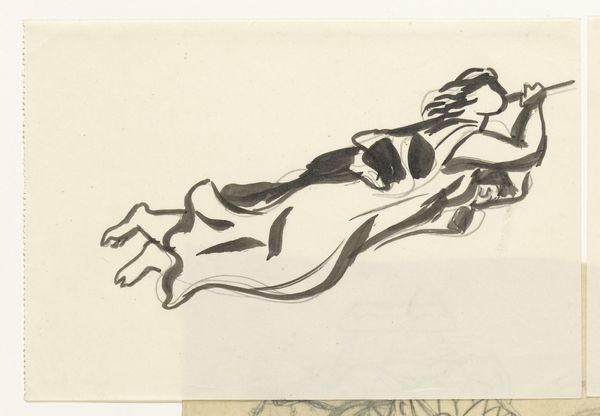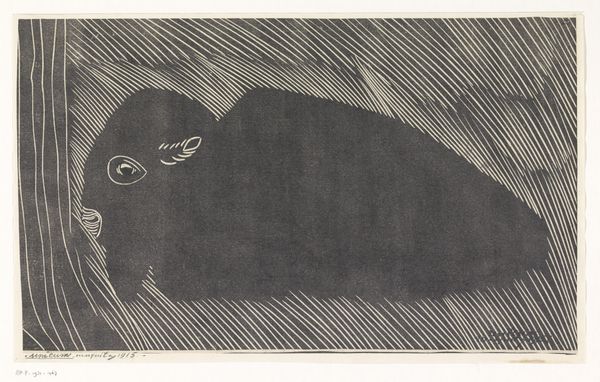
drawing, print, ink, pen, frottage
#
portrait
#
drawing
#
imaginative character sketch
#
thin stroke sketch
#
animal
# print
#
incomplete sketchy
#
landscape
#
personal sketchbook
#
ink
#
idea generation sketch
#
ink drawing experimentation
#
pen-ink sketch
#
sketchbook drawing
#
pen
#
sketchbook art
#
frottage
#
realism
#
initial sketch
Dimensions: height 49 mm, width 107 mm
Copyright: Rijks Museum: Open Domain
Curator: This is “Haas,” dating from between 1840 and 1880, by Johannes Tavenraat. It’s currently held in the Rijksmuseum. Editor: It’s an energetic ink sketch of a hare in full stride. It feels so immediate, like the artist just captured a fleeting moment. How would you interpret this work, thinking about the materials and techniques Tavenraat used? Curator: Well, consider the pen and ink. They were relatively inexpensive and easily accessible materials during the 19th century. The speed and fluidity of the ink line suggest not a finished product, but a study, an exercise in capturing form and movement. What does this say about artistic labour at the time? Editor: I guess it highlights how art wasn't always about grand, monumental creations. These preparatory sketches allowed for material exploration. Curator: Precisely! Tavenraat wasn’t necessarily trying to create a masterpiece. He might have been honing his craft. How does seeing the artist’s hand, his working process so directly, influence your perception of the subject? Editor: It makes the hare seem more vulnerable, almost fragile. Not an idealised figure, but a living creature captured imperfectly by human hand. Were drawings like this commonly sold, or were they mostly for personal study? Curator: Often these remained within the artist's studio, serving as a reference or a means to refine skills. The art market's expansion during this period however meant some found their way to collectors, complicating that distinction. Consider the implications for our understanding of art’s purpose – from mere utility to object of aesthetic value and economic transaction. Editor: That's a different way of thinking about art! So, appreciating the sketch involves acknowledging both its material production and its possible circulation within artistic and commercial networks. Curator: Exactly. Seeing art through a materialist lens reveals hidden layers about labor, access, and artistic intention beyond the image itself. Editor: I’ll never look at a quick sketch the same way again. It makes me realize how the artistic process connects to broader social and economic structures.
Comments
No comments
Be the first to comment and join the conversation on the ultimate creative platform.
